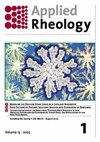三轴加卸载循环作用下层状盐岩的蠕变特性
IF 5.8
4区 工程技术
Q1 MECHANICS
引用次数: 0
摘要
为了更好地了解层状盐岩的粘弹塑性应变特性,本文对三轴加载和卸载循环作用下的层状盐岩进行了广泛的实验室研究。具体而言,从三轴加载和卸载试验中获得蠕变曲线,并使用Burgers模型进行分析。利用干磨光学图对层状盐岩蠕变试验前后的微观结构进行了对比分析。结果表明:低偏应力条件下层状盐岩蠕变以粘弹性变形为主,高偏应力条件下层状盐岩蠕变既有粘弹性变形,也有粘塑性变形;随偏应力的增大,瞬时弹性应变和塑性应变均增大,且随偏应力的增大,瞬时弹性应变和塑性应变的增大速率减小。用Burgers模型可以很好地表示层状盐岩的蠕变曲线。由于蠕变作用导致层状盐岩的压裂和层间破裂,并产生新的流体渗流通道,因此该研究对了解层状盐岩储气液洞室的长期动态具有重要价值。本文章由计算机程序翻译,如有差异,请以英文原文为准。
Creep behavior of layered salt rock under triaxial loading and unloading cycles
Abstract This paper presents an extensive laboratory investigation of layered salt rocks under triaxial loading and unloading cycles aiming to better understand their viscoelastic plasticity strain characteristics. Specifically, creep curves were obtained from the triaxial loading and unloading tests and analyzed using the Burgers model. The microstructure of the layered salt rocks before and after the creep test was comparatively analyzed using the dry grinding optical diagram. The results show that the creep deformation of layered salt rocks is mainly viscoelastic under a low deviatoric stress and contains both viscoelastic and viscoplastic deformations when the deviatoric stress is high. With the increase of deviatoric stress, both the instantaneous elastic and plastic strains increase, and the increasing rate becomes lower as the deviatoric stress increases. The creep curves of layered salt rocks can be well represented with the Burgers model. Since the creep leads to fracturing and interlayer rupturing and producing new fluid seepage channels in layered salt rocks, this study has great value for understanding the long-term performance of gas and hydrocarbon liquid storage caverns in layered salt rock formation.
求助全文
通过发布文献求助,成功后即可免费获取论文全文。
去求助
来源期刊

Applied Rheology
物理-力学
CiteScore
3.00
自引率
5.60%
发文量
7
审稿时长
>12 weeks
期刊介绍:
Applied Rheology is a peer-reviewed, open access, electronic journal devoted to the publication in the field of applied rheology. The journal provides the readers with free, instant, and permanent access to all content worldwide; and the authors with extensive promotion of published articles, long-time preservation, language-correction services, no space constraints and immediate publication.
 求助内容:
求助内容: 应助结果提醒方式:
应助结果提醒方式:


